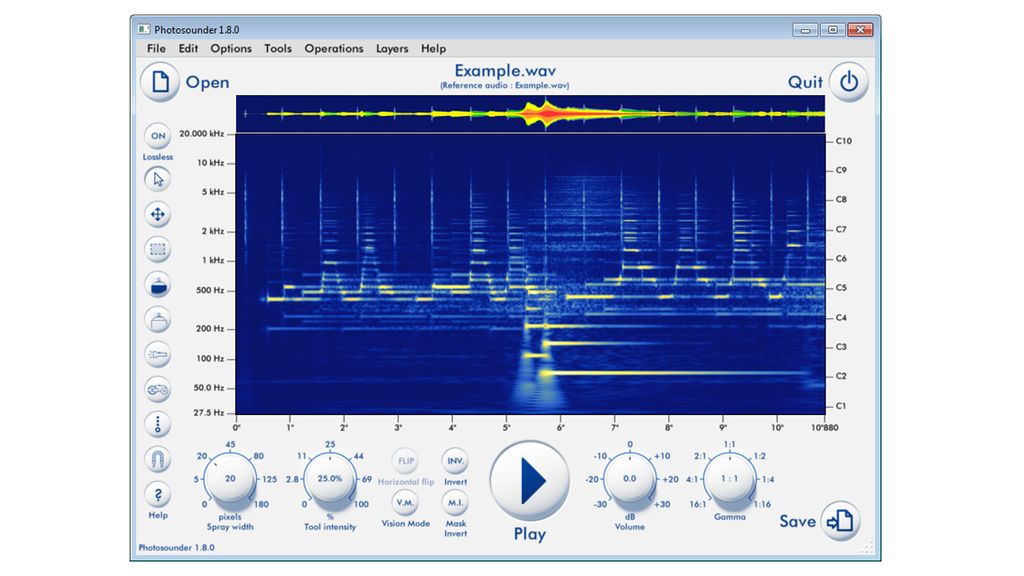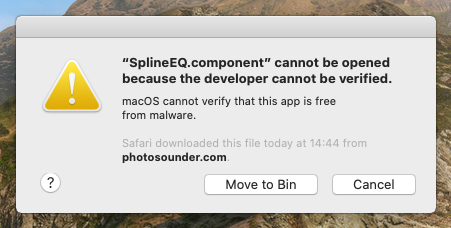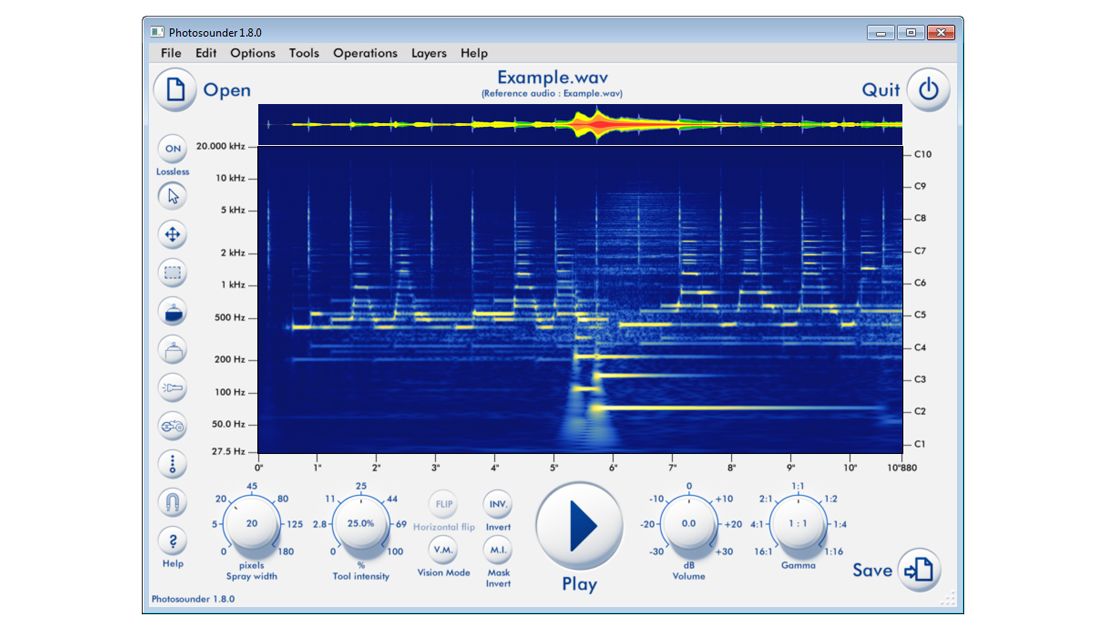

For more precision in your movements, you can move the cursor further away from knob.

In order to change a value defined by a knob, simply click and hold anywhere on the circular area of the knob, and move the cursor in circles around the knob clockwise or counter-clockwise. The window of Photosounder can be resized by clicking and holding the group of dots in the lower right corner of the window, and dragging the cursor to the position on the screen where the lower right corner of the window is desired to be.ĬONTROLS OPERATION In Photosounder, most settings are defined by knobs, which are controlled by the mouse. It can be particularly helpful if you're trying to determine the precise pitch of a note. When the cursor is over the image, it will also indicate in the lower left corner of the window the time, frequency and pitch coordinates of where in the image your cursor is pointing. You can also control the sound volume by turning the Volume knob in circles using the mouse. It means that when you click somewhere on the image while playing the sound, the sound playback jumps where you clicked. By default at the start, the Cursor tool is selected.
#Photosounder guide archive
You can save and entire project (including every layer, setting and lossless data) by choosing to save to a Photosounder Archive file (.pha). You can also save the image obtained by pressing the same Save button, and by choosing the image option in the drop-down menu. You can save the produced sound into a sound file by pressing the Save button. The light blue part of the bar is the part of the sound that remains to be synthesised, the medium blue area is the part of the sound currently being processed, and the dark blue part of the bar that displays a waveform is the sound you can already listen to by click the button Play.

Once either an image or sound is done loading (the latter which can take a few seconds depending on the length of the sound and the processing power of the machine it is running on), Photosounder starts synthesising the image into a new sound, which progress is depicted by the blue progress bar above the image. A notable difference between images obtained in such a way and regular images in Photosounder is the former present a much higher precision in their intensity, and to represent this higher precision in a convenient fashion, their intensity is displayed in a very colourful way that helps you seize the slightest variations in the image in a glance. That image represents features present in the sound loaded in a way that allows it to be turned back into sound in a relatively faithful way. Whereas images are loaded largely untransformed, sounds first have to be processed and turned into a kind of image called spectrogram.
#Photosounder guide full version
The full version is installed by extracting the ZIP file and placing the license file in the same directory as the program.īASIC OPERATION Photosounder can open many types of image and sound files.
#Photosounder guide download
Once the payment has been received, you should receive by e-mail within 24 hours a link to download the program as well as the license file needed by the full version of the program to run. The full version is obtained by buying on the website. Getting started INSTALLATION The demo version of Photosounder is simply installed by downloading it on the Photosounder website, and extrating the ZIP file to the desired location. INSTALLATION BASIC OPERATION CONTROLS OPERATION PARAMETERS SPRAY TOOLS RECTANGLE TOOL HARMONICS MODIFIER MAGNET MODIFIER ZOOM LIVE SYNTHESIS


 0 kommentar(er)
0 kommentar(er)
